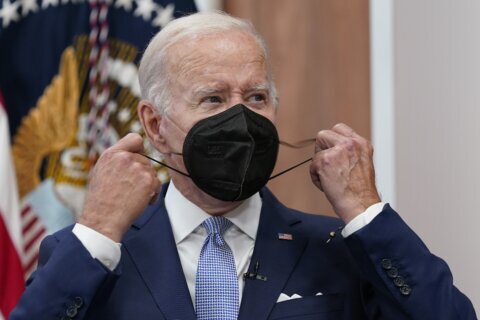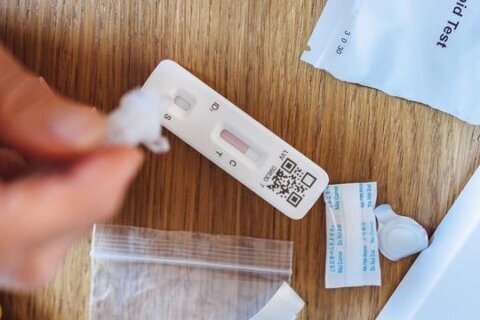Parts of the D.C. area are now seeing what federal health officials classify as substantial rates of COVID-19 transmission, triggering a recommendation that people in those areas once again wear masks.
When it comes to COVID transmission rates, D.C. and Alexandria are seeing rates in the substantial category, which is classified as between 50 and 99 positive COVID-19 cases per 100,000 over the past week.
Under new CDC guidelines, that substantial category designation comes with a recommendation that fully vaccinated people go back to wearing masks indoors.
Just two months ago, the CDC said vaccinated people didn’t have to wear masks indoors and the D.C. area has higher than average vaccination rates.
So why isn’t the vaccine enough? The delta variant.
There’s evidence COVID-19 delta variant can be caught and transmitted by the vaccinated. It’s also far more potent than the earlier versions of the virus.
FAQ: What CDC’s latest guidelines mean for DC region
“I think what we learned about the delta variant is that it’s far more infectious, and so it tends to reach more people in a given setting than any previous version we’ve had,” said Dr. Stuart Ray, vice chair of medicine for data integrity and analytics at Johns Hopkins University.
In May when the CDC relaxed the recommendations on masks, the delta variant only represented about 1% of all the circulating virus sequence in the United States, Ray said. Now it represents more than 80%.
“There’s some preliminary evidence that the level of virus coming out of a person with the delta variant might be a hundred or a thousand times higher than the amount of virus from a person with the original strains that we first saw year and a half ago,“ said Ray,
“In the vaccinated it’s possible that masking will help us reduce transmission to both vaccinated and unvaccinated people.”
While the CDC guidelines recommend masks indoors for areas since the increases in cases, Ray said he also thinks wearing them outdoors may not be a bad idea sometimes.
“With the highly infectious strain like delta achieving perhaps hundred or thousand fold levels of virus in the cloud around a person who’s infected, it’s possible that outdoor settings also become risky and so my practice has been to continue wearing my mask,” he said.
Watching the trends, Ray expects cases to keep rising, and that things will get worse before they get better. How much worse he thinks will depend on how people react to the current situation.
“I think that we have to realize that we’re not going to get normal and we’re not going to be able to fully open up this fall or stay open this fall if we don’t get some containment,” said Ray, “That’s going to be a multi-layer approach with masks and vaccines being major components of that “
He said people can expect more transmission in the fall when kids under 12, who can’t be vaccinated, go back to school, and the cooler temperatures start moving in.
WTOP’s Scott Gelman contributed to this story.








